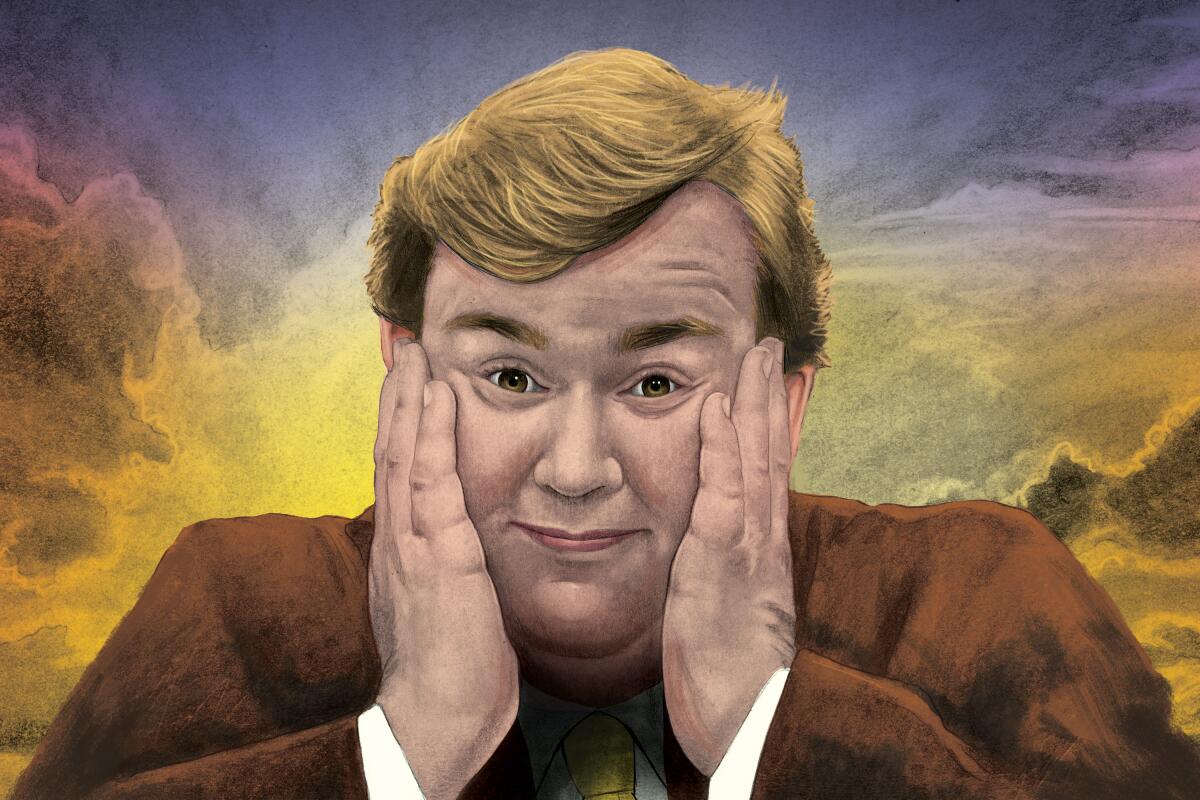Welcome to Screen Gab, the newsletter for everyone who spent the week Googling Ed Gein.
“Monster,” the gruesome and graphic anthology series from longtime collaborators Ryan Murphy and Ian Brennan, has dramatized the chilling story of serial killer Jeffrey Dahmer and the highly publicized and complex case of Lyle and Erik Menendez, brothers who were convicted for the 1989 murder of their parents. The third installment of the Netflix series, which was released last week, puts its twist on the legend of Gein, a killer who inspired fictional villains like Norman Bates and Leatherface. Brennan, who wrote the season, stopped by Guest Spot to discuss the fantastical approach to the season and that “Mindhunter” hat tip.
Also in this week’s Screen Gab, our streaming recommendations include a “Frontline” documentary that continues its chronicle on the lingering impact of poverty and a spinoff of “The Boys” set at America’s only college for superheroes.
ICYMI
Must-read stories you might have missed
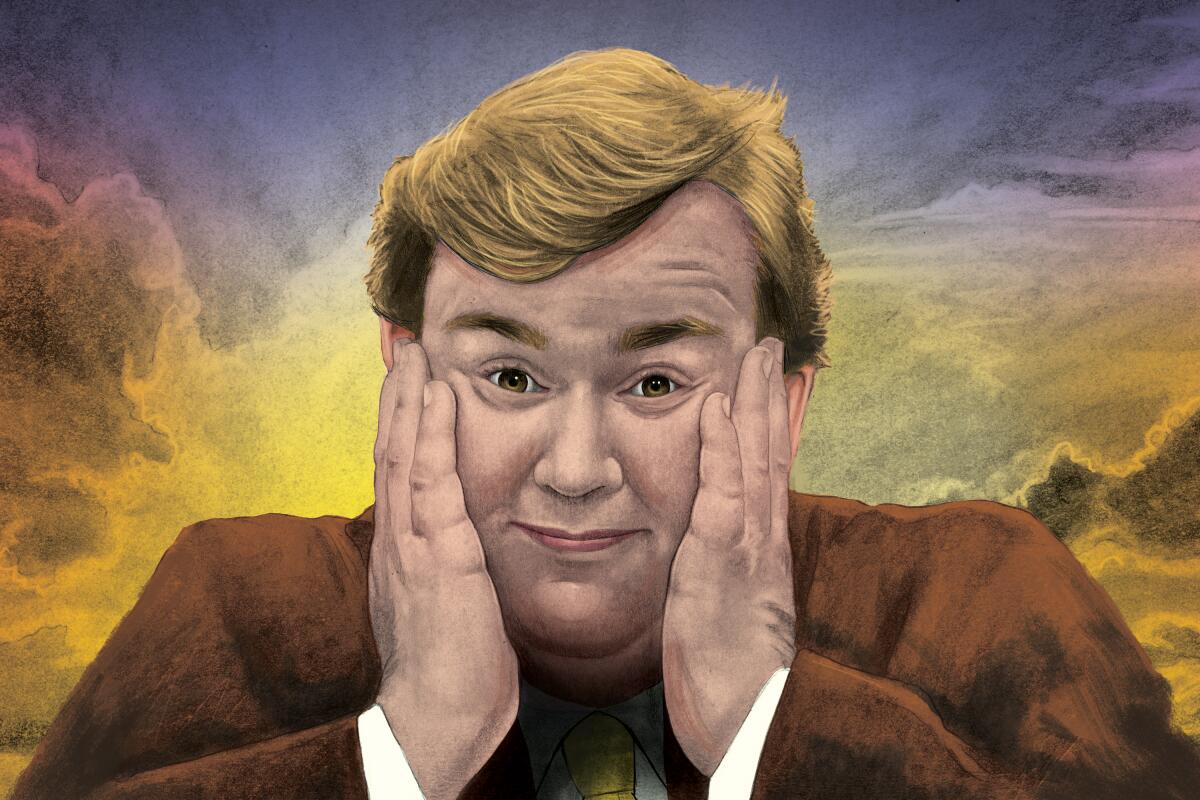
Illustration of John Candy with his hands on his cheeks.
(Brian Lutz / For The Times)
‘You never stop thinking about John Candy’: How a pair of projects keep his legacy alive: The beloved actor, who would have turned 75 this month, is the focus of an eponymous biography and “John Candy: I Like Me,” a documentary directed by Colin Hanks.
With the help of advisors, ‘Boots’ co-stars challenged themselves to portray military life authentically: Actors Miles Heizer and Max Parker trained like Marines and utilized the experiences of the show’s military advisors to ground their characters.
She’s used to finding laughs in catastrophe. But Rose Byrne is only now going to the edge: After stealing focus in everything from “Bridesmaids” to “Insidious,” Rose Byrne unravels beautifully in “If I Had Legs I’d Kick You.”
Victoria Beckham sheds Posh persona, gets candid about eating disorder in Netflix doc: The three-part docuseries chronicles the Spice Girls alum’s pivot from pop stardom to high fashion.
Turn on
Recommendations from the film and TV experts at The Times
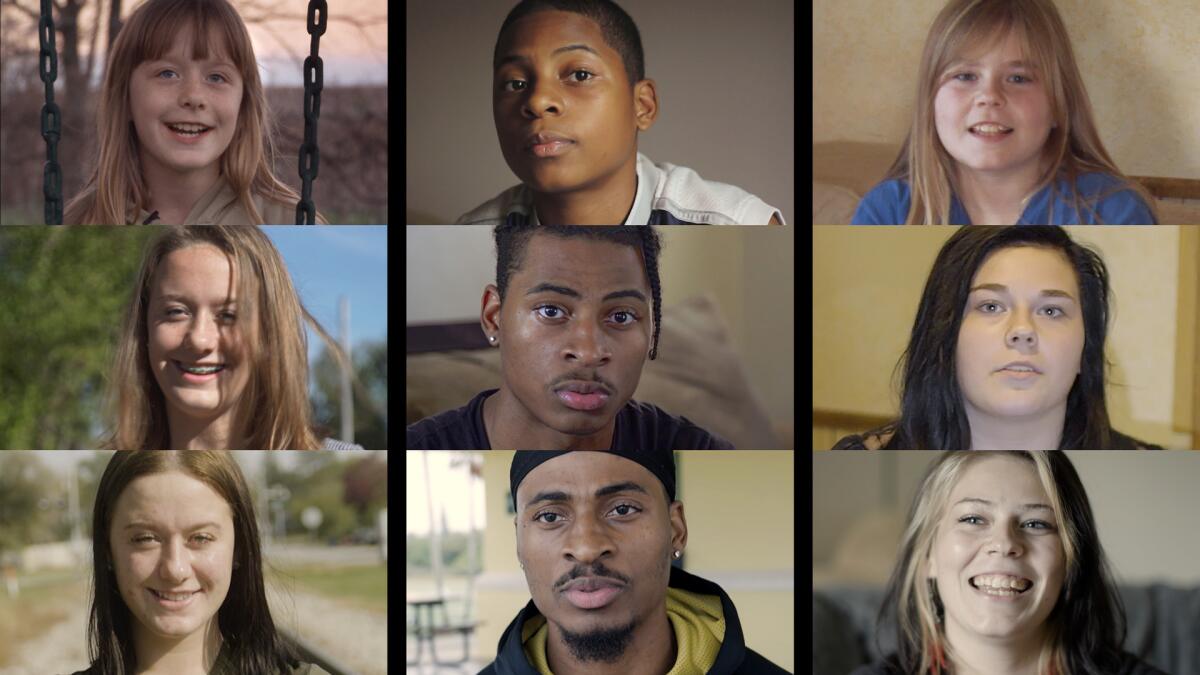
A still from “Frontline: Born Poor,” which filmed over 14 years with kids from three families, from adolescents to adults, to explore how poverty has affected them.
(Frontline PBS)
“Frontline: Born Poor” (PBS.org)
Television is glutted with “reality,” but there are still filmmakers who prefer to look at how people live when they’re not contestants in a dating game or bunked up with competitive strangers. Jezza Neumann’s “Born Poor” is the third installment in a moving documentary series that began 14 years ago with “Poor Kids,” and, like Michael Apted’s “7 Up” films, has visited its subjects in intervals over the years since. Set in the Quad Cities area, where Illinois meets Iowa along the Mississippi River, it follows Brittany, Johnny and Kayli from bright-eyed childhood into chastened, though still optimistic adulthood, as they deal with life on the margins — power lost, houses lost, school impossible, food unpredictable. Now, with kids of their own, all are concerned to provide them a better life than the ones they had. With Washington waging a war on the poor to protect the rich, it’s a valuable watch. — Robert Lloyd
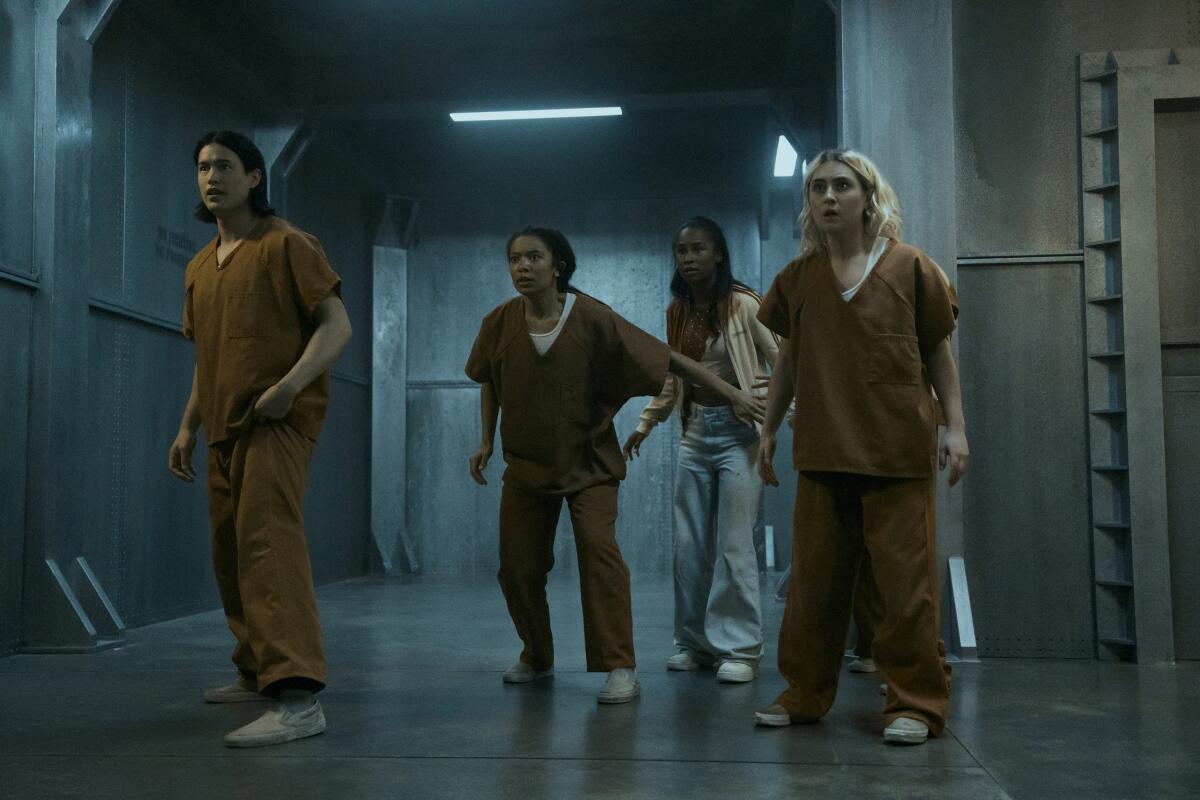
Derek Luh (Jordan Li), from left, Jaz Sinclair (Marie Moreau), Keeya King (Annabeth Moreau), Lizze Broadway (Emma Meyer) in “Gen V.”
(Jasper Savage / Prime)
“Gen V” (Prime Video)
Just two weeks out from its Season 2 finale and the satirical superhero series continues to deliver merciless dark humor and sharp topical commentary on America’s great crumble — inside of a tale about misfits enduring the rigors of college life.
Spun off from the brilliant “The Boys” franchise, this series from Eric Kripke, Craig Rosenberg and Evan Goldberg follows a group of students at Godolkin University, an institution designed to identify and train the next generation of superheroes. But the co-eds soon discover that their supposed higher education is in fact a clandestine operation to create “Supe” soldiers for an impending war between the super-powered and non-powered humans. Returning to the fold is Marie Moreau (Jaz Sinclair), who emerges as the rebel group’s most powerful weapon against the school’s nefarious plot. Working alongside her are Emma (Lizze Broadway), Cate (Maddie Phillips), Jordan (London Thor and Derek Luh) and Sam (Asa Germann). The wonderfully unnerving Hamish Linklater (“Midnight Mass”) joins the cast as the school’s new dean.
Is “Gen V” just as gory as “The Boys”? Absolutely. Watch with caution. But nothing else is quite as fearless in calling out the contradictions and absurdities of our times, be it corrupt politics, corporate domination or false religiosity. — Lorraine Ali
Guest spot
A weekly chat with actors, writers, directors and more about what they’re working on — and what they’re watching
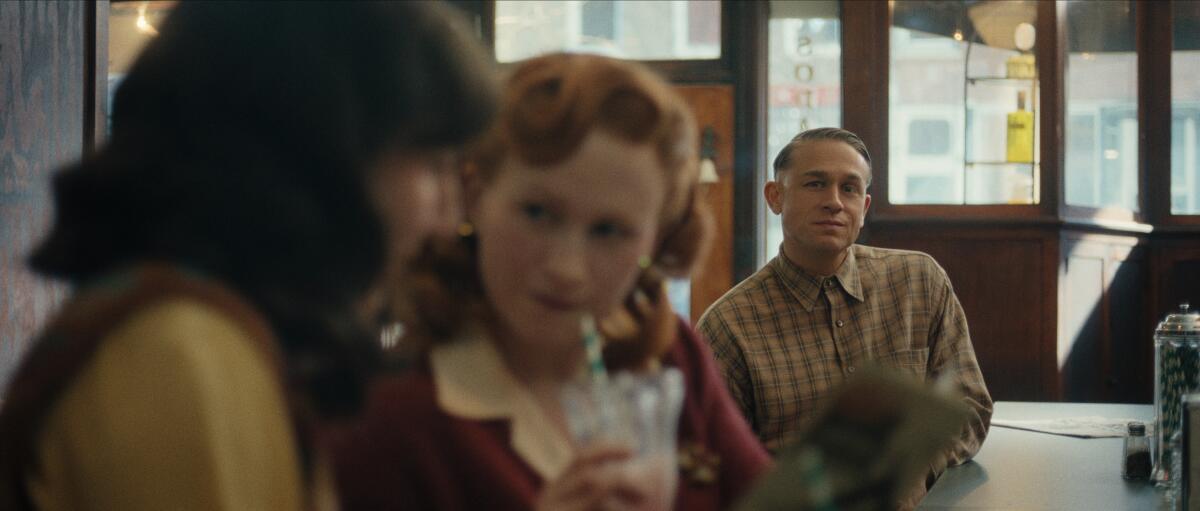
Charlie Hunnam as Ed Gein in an episode of “Monster: The Ed Gein Story.”
(Netflix)
“Monster: The Ed Gein Story” stars Charlie Hunnam as the so-called “Butcher of Plainfield,” whose gruesome crimes in 1950s small-town Wisconsin went on to inspire pop culture classics like “Psycho” and “The Texas Chain Saw Massacre.” The season leans into Gein’s diagnosed schizophrenia and his legacy in Hollywood to present a deeply fictionalized version of his horrifying activities. All eight episodes of the season are now streaming. Ian Brennan, who co-created the anthology series with Ryan Murphy and helmed the latest installment, stopped by Guest Spot to discuss the season’s approach to fact vs. fiction, that “Mindhunter” nod and the documentary that earns his rewatch time. — Yvonne Villarreal
We often hear from actors about the roles that stay with them long after they’re done filming. Are there elements of “Monster: The Ed Gein Story” that you still can’t shake?
Ed Gein was schizophrenic, and I find the internal life he would have suffered through for decades — alone and hearing voices, primarily that of his dead mother — completely harrowing. He wasn’t medicated until late in his life, and until he was, his mind was a hall of mirrors of images he saw and couldn’t unsee — most shockingly photos of Nazi atrocities during the Holocaust. I believe the only way he could cope was to try to normalize these things — digging up bodies, skinning them, making things from them — and the nagging voice of his mother ultimately drove him to murder at least two women, Mary Hogan and Bernice Worden, maybe more. Ed Gein wasn’t the local boogeyman — his neighbors didn’t find him scary — he was the guy you’d have watch your kids if the babysitter canceled last-minute. And yet, in those four inches between his ears there existed a bizarre, terrifying hellscape of profound loneliness and total confusion. Every day in this country we see what happens when the lethal combination of male loneliness and mental illness goes ignored. The thought of an Ed Gein living just down the street from me is chilling.
“Based on a true story” depictions typically have a loose relationship with the truth due to storytelling needs. This season of “Monster” bakes that idea into the narrative — whether because of Ed’s understanding of events or the way in which he, or his crimes, inspired deeply fictionalized villains like Norman Bates (“Psycho”), Leatherface (“The Texas Chain Saw Massacre”) and Buffalo Bill (“The Silence of the Lambs”) — in trying to unpack the “Who is the monster?” question. What questions were swirling in your head as you tried to weave this story together? And how did that inform where and how you took your liberties?
Ed’s story is, in many ways, fragmented — he didn’t remember many details of the acts he committed, and he passed polygraph tests when interrogated about cold cases police suspected he may have perpetrated. So we knew from the very beginning that there would be gaps to fill in when telling his story — and it seemed the obvious way to do it was to let the true story interplay with the fictionalized versions of Ed Gein that he inspired. There’s a subtle thematic bleed between the versions of Ed we see in the series and the monsters in the movies he inspired — in the first three episodes, we see a “Psycho”-inflected Ed Gein obsessed with his mother; next a much more sexualized, violent Ed Gein that would become “Leatherface”; then an Ed Gein who so fetishized the female body and who was made so ill by the repression of that urge that he became obsessed with building a suit made from women’s bodies. These versions of Ed, to me, are like the blind men feeling different parts of the elephant in the parable — each true in their own way, but each also just a fragment of a shattered whole that will probably never be fully understood.
The season finale features a “Mindhunter” nod. Happy Anderson, who played serial killer Jerry Brudos on that show, reprises his role as the Shoe Fetish Slayer, talking to characters meant to be Holden Ford and Bill Tench, though they’re named John Douglas and Robert Ressler, the real FBI agents who inspired the fictional ones. When and why did you realize you wanted to have that hat tip? Was there an attempt to try to get Jonathan Groff or Holt McCallany?
Having written three seasons of this anthology so far, we’ve realized each time that the emotional climax always comes in the penultimate episode and the finales are always particularly difficult to figure out. We knew we needed to top the episodes that had preceded it by shifting the show’s look and tone — and we had in our hands the nugget that John Douglas and Robert Ressler had, indeed, interviewed Ed Gein in person. Ryan and I both find David Fincher’s oeuvre almost uniquely inspiring, so once we pictured an episode that played as an homage to Fincher’s tone and style and narrative approach, it was something I, at least, just couldn’t unsee. If we were going to go down the rabbit hole of what this chapter of Ed’s story might have looked like, I could only really picture it in Fincher’s terms — so your guess is as good as mine as to why casting the “Mindhunter” pair of Jonathan Groff and Holt McCallany in the roles didn’t feel right (we both love both of those actors), but it just didn’t.
There are so many dark moments for the actors. What scene struck you as especially difficult to write and shoot?
I was at once excited and terrified by the challenge of depicting necrophilia on our show. I’m fairly certain it’s never been done before on TV, and I knew it ran the risk of seeming arbitrarily shocking or exploitative (though I think choosing to tell Ed’s story in an easier manner by avoiding this chapter and not showing it would be the actually exploitative choice). Needless to say, even after I’d written the scene, it preoccupied me, as I had to also direct it. I felt greatly helped by the new industry standard of intimacy coordinators on set — and ours, Katie Groves, was spectacular — but still I worried about the scene just playing as cringey or unwatchable. But Charlie Hunnam, as with every scene he acted in on the show, came at the sequence with honesty and deep concern to capture all of the strangeness of the bizarre, disturbing act we were depicting — and what it said about what was going on inside Ed to lead him to commit such an act.
What have you watched recently that you are recommending to everyone you know?
I just saw PT Anderson’s “One Battle After Another” — which was shot by one of our two directors of photography, Michael Bauman — and was just completely floored and delighted. I’m sure it’s rife with homage to films that have gone before, but I could detect no inheritance at all; it felt like a genre to itself — completely original and new. And I still find the time I watched Jonathan Glazer’s “Zone of Interest” to be among the most profound experiences of my life. He took what is maybe cinema’s most settled, well-trodden genres and turned it on its head in a way I found shocking and revelatory. If there is a better portrait of the proximity and ubiquity and the banality of human evil, I haven’t seen it. I think it is as brilliant a slice of human ingenuity as has ever been crafted. I have thought about that movie every day since I first saw it.
What’s your go-to “comfort watch,” the movie or TV show you go back to again and again?
It’s annoying to say it, but I don’t watch a lot of television. It’s like spending all day at the sausage factory then coming home to watch sausage footage. But the big exception is Peter Jackson’s Beatles documentary “Get Back” [Disney+] chronicling the making of the film and album “Let it Be.” I basically just watch it over and over again. I came late to the Beatles (I loved the Who and resented that they always sat squarely in the Beatles’ shadow), but when they hit me, they hit me hard, and watching them in this documentary at the height of their powers is a master class in the craft of collaboration and the hard work of genius. Also, everything I thought I knew about the Beatles at the end of their stretch as a band is wrong — fighting all the time? A bit but not really. Paul hated Yoko? He actually seems to really like her. I don’t know how many hours the documentary clocks in at, but I wish it were 10 times as long.
